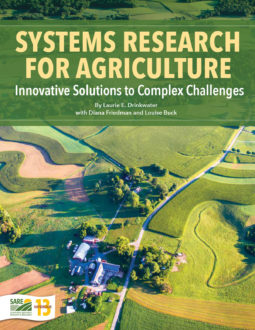Developing a Collaborative Team
Role of the Project Leader
Assembling the Core Team
Engaging Farmers and Other Nonacademic Stakeholders in Systems Projects
Instilling a Culture of Collaboration
Facilitating Participatory Decision-Making
Elements of Participatory Decision-Making
Becoming a Good Facilitator
Planning and Conducting Effective Meetings
Planning the Meeting
During the Meeting
SARE Case Study: SAFS: Systems Research Using Participatory Decision-Making
References
Coming together is a beginning. Keeping together is progress. Working together is success. —Henry Ford
Because agricultural systems research aims to understand agriculture as a complex system, interdisciplinary research—research that integrates perspectives and knowledge across disciplines—is generally the most effective approach to use for agricultural systems projects. However, this approach can be challenging because participants must address questions and problems beyond their areas of expertise. Collaborating with scientists from other disciplines can also be difficult because many researchers are accustomed to having a great deal of autonomy and control over their work, and to interacting primarily with others in their own or closely related disciplines. Many scientists may also find it challenging to share decision- making, planning and outreach with nonacademic team members such as farmers, consumer groups or community planners.
And yet, teamwork and participatory decision-making are the cornerstones of successful interdisciplinary systems research. As mentioned in Chapter 1, a critical part of systems research is regrouping, which involves changes in how questions are tested. Regrouping also requires using the skills of a diverse team to tackle those questions.
